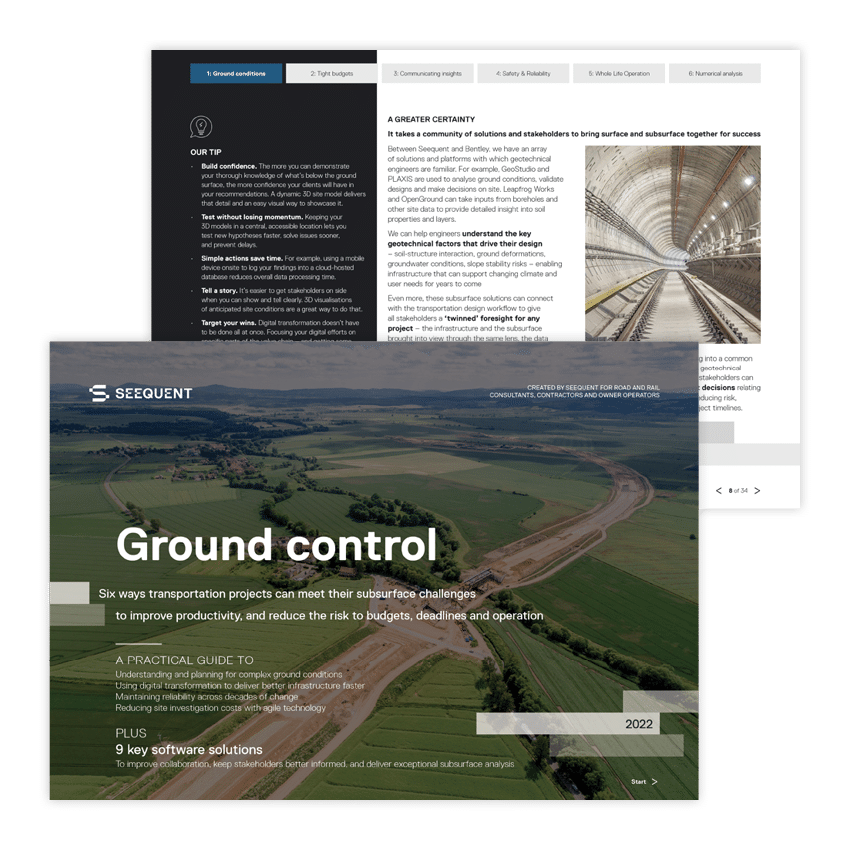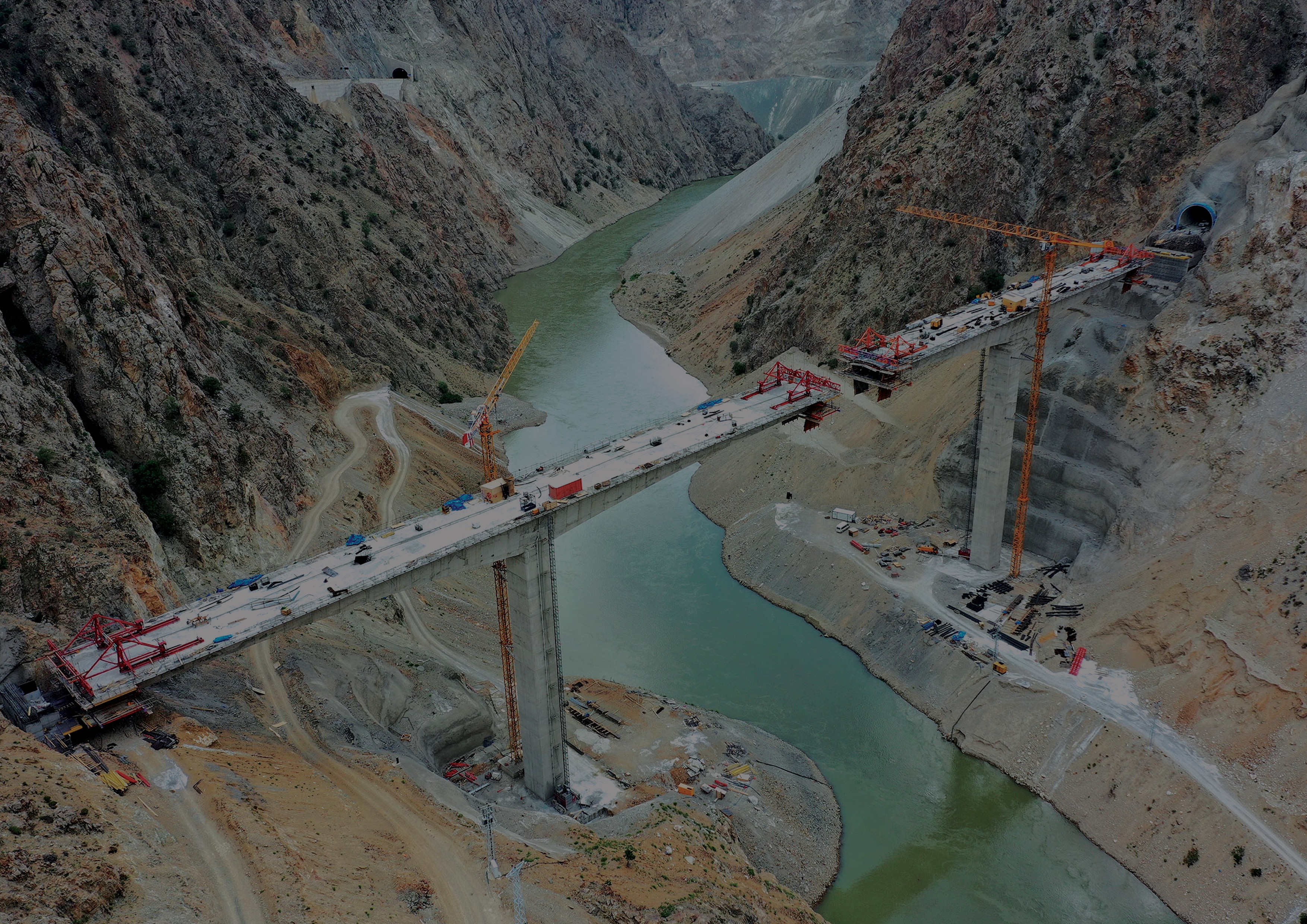
”… and geotechnical engineers need a more supportive methodology to tackle them.
Paul GrunauSenior Vice President, Geotechnical Solutions, Seequent
The linear extension of road and rail projects – the sheer distance they cover – means they will encounter wide variabilities in geology and ground conditions, both at and below the surface.
Tunneling will unlock stresses that have built up over millions of years, and the results may be hard to predict. Cutting into slopes can increase the risk of landslides. Changing ground water levels may affect the shear strength of the soil on which you are building. Understanding potential ground deformation can change the planned routes and avoid project costs. Bridge piers and foundations require subsurface knowledge to ensure the bridge structure can withstand loads, floods, and even earthquakes.
All of these elements can come together in just a single transportation project, creating a demanding assortment of ground engineering issues. This frequently sets transport enterprises apart, both in the degree of complexity they face and the multi-layered nature of the ground condition hazards they confront; both the pre-existing hazards and the new ones induced by construction activities.
Today, the complexity of transportation projects and the pressures upon them – to be on time, to be sustainable, to be more efficiently constructed, to run within tighter budgets, to be accountable to the public – means geotechnical engineers need a more iterative methodology to deliver the best results; one where they can constantly change and refine their own recommendations because they are involved at every step of the project development rather than working in a silo. They need to be part of a rich connected workflow that brings all stakeholders together.
When you create such a workflow you can witness changes ripple through an entire project – smoothly, collaboratively and in time for you to react to each unknown as it presents itself.
Driving the success (and managing the cost) of new transportation projects is as much about mindset – a digital mindset – as it is about technology. It’s about getting people to trust each other and giving them the tools to connect, collaborate, and talk, so true partnerships are forged between consulting companies, software vendors, project owners, and all other stakeholders.
For the full version of this feature, with more ideas, practical tips, product suggestions and a case study, download our eBook.

